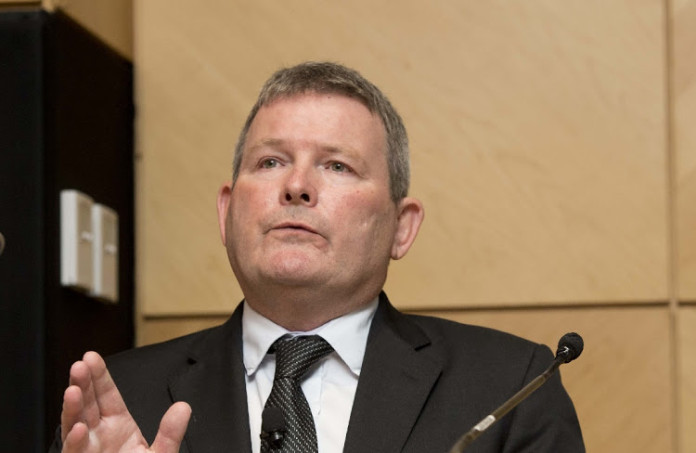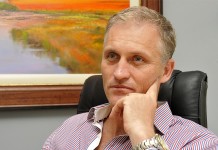
Platinum prices, which continue to languish near decade lows, have done little to dampen the confidence of Northam Platinum CEO Paul Dunne, who is sticking to his strategy to double annual output to one million ounces by 2022.
The miner earmarked R3.8bn for capital expenditure in the financial year to end June, plunging the company deeper into debt than some analysts expected, with a further R1.9bn and R1.5bn budgeted for the 2019 and 2020 financial years respectively. These capex figures – equal to nearly 40% of the group’s current market capitalisation – exclude the “relatively small” planned capex for Eland Mine, which it bought earlier this year from Glencore, Dunne says. Net debt totalled about R2.5bn at the end of April.
A platinum bull, he admits that he’s been caught by surprise by the fact that prices have remained depressed for so long. But, he says, Northam “believes in the metals. We believe the world wants platinum group metals (PGMs)”.
Analysts have been bearish on the platinum market, citing oversupply of the metal and sluggish demand from the industrial sector, notably automotive manufacturing, as the US considers tariffs of as much as 25% on imported cars and parts. In the longer term, demand from the automotive sector is expected to decline as battery-powered vehicles become more popular.
The automotive industry remains the key sector to watch, Dunne says. “We don’t think the threat from battery-powered vehicles is as strong as is sometimes put forward in public by some commentators. I don’t think personally, and neither does Northam, that the battery will replace the internal combustion engine. We simply don’t believe it, rightly or wrongly.”
Dunne is also optimistic about the potential uptake of hydrogen fuel cells, which would boost demand for PGMs. “I think fuel cells are now fully commercialised; we’re in the early adoption phase.”
The Chinese jewellery market, where demand has been in decline, is also crucial. “The jury is out whether Chinese jewellery has found a level now and can build off that base. We’d like to see another year of data before we make a firm opinion on that one,” Dunne says.
In the meantime, Northam remains focused on its counter-cyclical growth strategy, investing at a time when prices are low, with the expectation that new production will come online in a rising market.
“We’re trying to put together a set of assets which on the one hand have a long life, and on the other hand operate as far down the cost curve as we can possible achieve,” Dunne says. “The strategy itself is not fundamentally founded on a rising price per se, although we do expect prices to rise. It is, in fact, a growing down the cost curve strategy in its fundamental sense.”
Both its current operating mines – Zondereinde, a conventional PGM mine near Thabazimbi, and Booysendal, a shallower, mechanised mine near Mashishing – have been earning operating profits at current price levels. With a number of its expansion plans aimed at lowering the unit cost of production at these mines, margins are expected to improve over time, even if prices don’t play along.
We’re trying to put together a set of assets which on the one hand have a long life, and on the other hand operate as far down the cost curve as we can possible achieve.
At Zondereinde, operations have been constrained by a lack of availability of Merensky ore, which led Northam to purchase the Tumela resource – now known as the Western Block – for R1bn from Anglo American Platinum’s neighbouring mine. “This enables Zondereinde to once again access significant quality and quantity of Merensky reef, effectively restoring Zondereinde to full nameplate production,” Dunne says.
The resource will be accessed from Zondereinde’s existing infrastructure, with development taking place into that block on 10 levels, from 3 Level down to 12 inclusive, he explains. Work is progressing well, even though “we would like it yesterday”. The additional ground will add 16.7 million ounces to the Zondereinde resource base and extend the life of mine to beyond 30 years.
Northam has also invested in R900m in building a new 20MW furnace at Zondereinde, with €20m (R310m) invested by its long-time strategic refining partner Heraeus.
At Booysendal, the group has invested in deepening its existing UG2 North mine, developing the Booysendal Merensky North mine and building the new Booysendal South mine, which is expected to reach steady-state production of 215,000oz a year by the 2022 financial year. Ore from Booysendal South will be treated at the concentrator at Everest mine, which was purchased from Aquarius Platinum for R450m in 2015, with milling scheduled to start in April 2019.
“The project is progressing well. It’s all still on track, on budget, and actually looking quite promising. I’m hoping that we can do better than what we’ve said,” Dunne says.
The R175m purchase of Eland, which was placed on care and maintenance by Glencore in 2015, was finalised in January. Three initiatives are planned for the mine, near Brits, in the coming year: the Kukama shaft will be recommissioned and trial mining undertaken on one level west; the metallurgical plant will be recommissioned by February to process the tailings dam for PGMs and chrome; and it will start processing 60,000 tonnes/month of PGM-bearing material from Jubilee Metals. The first ore from Jubilee was delivered in June, and the focus is on building a stockpile while work on recommissioning the mills progresses, Dunne says.
When you look at a product like Coca-Cola, the power lies in their distribution. You can go anywhere in Africa and you can get a Coke. In recycling it’s the opposite – you need a large collection network.
In a surprise move, Northam last year purchased US recycling company A-1 Specialized Services, which was in liquidation, for $10.7m. The company owned a collection and sampling facility, but no smelter. Small trial shipments have started for smelting in South Africa as Northam tests various business models, but they’re not yet taking in scrap at the facility.
“We believe what we paid is backed up by the property essentially,” Dunne explains. “We know the physicals of the business; what we need to be clear on is the working capital management. With shipping times of 21-25 days, you have long pipelines.”
One model is to purchase the scrap, ship it to South Africa, smelt and refine it, and then sell it. Another is a toll model where you return the metal to the customer rather than buy it, he says.
“We’ll explore both possibilities. But we want to go slow and steady,” he says. “When you look at a product like Coca-Cola, the power lies in their distribution. You can go anywhere in Africa and you can get a Coke. In recycling it’s the opposite – you need a large collection network. So we need a relationship with a party that have that large collection network.”
While the immediate priority is project execution, Dunne doesn’t exclude further acquisitions in South Africa.
“I think we’ve built the necessary suite of assets; we’re satisfied with what we’re done; we have a lot on our plate. The industry is in flux however, as everybody knows. Northam will always have a look, but if you look at the style and type of transaction we’ve undertaken in the past, it is one of bolt-on, asset-level purchase, 100% ownership, cash-type transactions.
“That’s our preferred methodology, and of course, there aren’t many left to do. We’ve probably done what we can for now, but we always watch and wait and see what falls off the table.”











